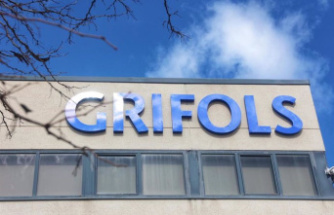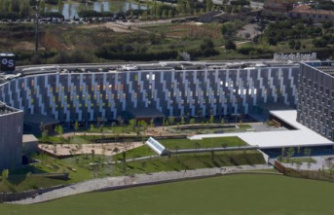TAMPA — On any given day you can see a quadcopter drone buzzing over a Tampa Bay park or a neighbor's backyard.
4 Months Ago
5 Months Ago
7 Months Ago
Quadcopters are so good at capturing images, and so cheap to own and maintain, that now U.S. Special Operations Command wants to buy its own fleet. This month, the command headquartered at MacDill Air Force Base put out a solicitation seeking small businesses that can provide 100 quadcopters, with the option to buy an additional 300.
The goal is to put them in the hands of U.S. commandos and allies to provide quick battlefield surveillance. For small teams of commandos, having the ability to see over a hill or behind a building can be a life-saver — the difference between mission success and catastrophe.
The command will not say much about how it plans to use the drones, other than that they are for U.S. forces and allies. But the specifications contained in the request show that SOCom is looking for commercially available drones that can:
• Fly at least 1.8 miles high with a video/datalink range of at least nearly 2,000 feet.
• Fly for at least 20 minutes, including autonomously with planned routes.
• Have an electro-optical camera with full-motion video that can be recorded at the ground station.
• Operate in temperatures ranging from 32 to 100 degrees Fahrenheit.
• Be fixable by commando teams, with the successful contractor providing the necessary repair tools and equipment.
• Have an all-in-one power adaptor.
For commandos, and especially allies, there is great utility in such a relatively simple, inexpensive system, said Dave Scott, a retired Air Force major general who last served as deputy director of SOCom's Center for Special Operations.
"Forces in the field always need to get a feel for the battlefield, so scanning beyond the next ridge line is important, visually and electronically," Scott said. The quadcopters "also could be valuable to enhance local communications."
There is another reason SOCom would want quadcopters. A large portion of SOCom's mission is helping its partners defend themselves.
Quadcopters are cheaper than military drones like the RQ-11B Raven, which can cost more than $200,000 for the entire system. And there are more than 50 commercially available systems that meet the SOCom specifications, according to an Association for Unmanned Vehicle Systems International database.
The price for quadcopters with the capabilities SOCom seeks start at about $800, according to the database. There are several models costing between $1,000 and $1,500, and others that cost from $50,000 to more than $100,000.
They do not all provide the full capabilities of the Raven but offer enough utility at a reasonable price to make them attractive to allies. And, being commercially available, there is no worry about transferring classified information or proprietary technology, said Bob Holmes, a retired Air Force brigadier general now living in Tampa who oversaw certain drone operations as deputy director of operations at MacDill-based U.S. Central Command.
"F-35s and satellites are nice, but not every partner nation can afford to own and maintain them," Scott said. "Innovative application of commercial technology such as a quadcopter may have great utility for partner nation forces needing less expensive and more appropriate ways to deal with their security challenges."
Contact Howard Altman at haltman@tampabay.com or (813) 225-3112. Follow @haltman.
Our editors found this article on this site using Google and regenerated it for our readers.













